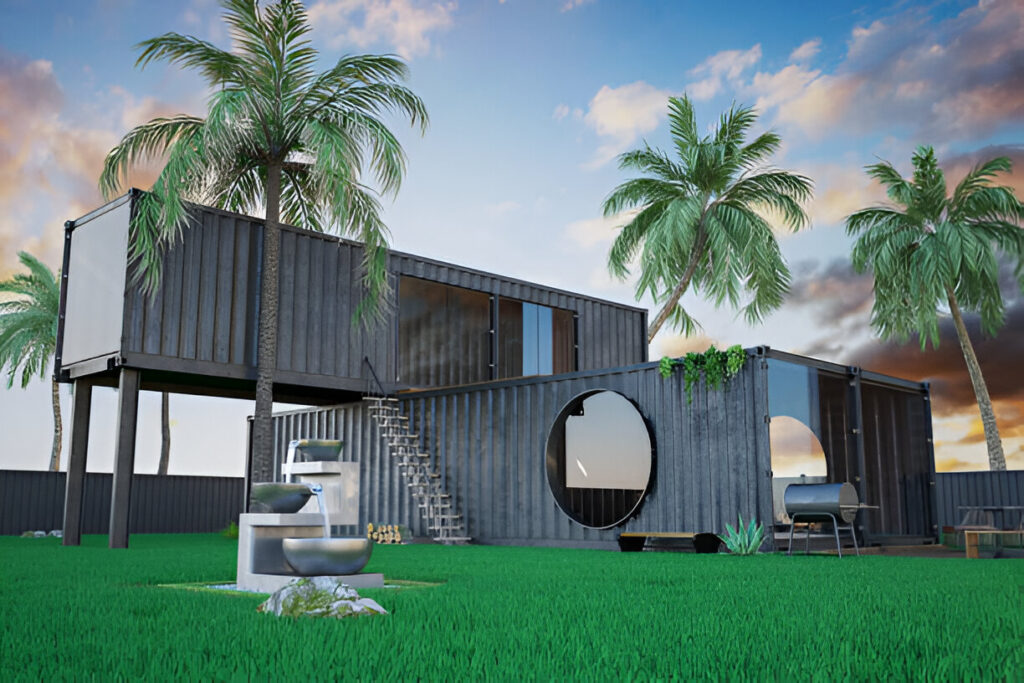The concepts of sustainability and eco-conscious living have become increasingly prominent in our daily lives. As the effects of climate change are felt around the globe, more people are seeking environmentally friendly housing options that minimize their carbon footprint. One revolutionary approach to sustainable living that has emerged recently is the adaptation of shipping containers into residential homes. Among the forerunners of this innovative movement are MR. container homes, which offer a unique blend of practicality, affordability, and environmental stewardship.
Understanding the Appeal of Container Homes
Container homes have gained popularity as a result of their numerous advantages. These structures, made from repurposed shipping containers, provide a level of flexibility and affordability that is often unmatched by traditional housing. Moreover, since shipping containers are designed to be durable and weather-resistant for international transport, they naturally provide strong and secure living spaces once converted.
The trend of using shipping containers for habitation has evolved from a quirky niche to a legitimate option for those seeking an alternative lifestyle. MR container homes, in particular, encapsulate the ethos of modern sustainable living, with their innovative designs that conserve resources, reduce waste, and offer a smaller ecological footprint compared to conventional construction methods.
The Sustainability Factor
The essence of sustainable living lies in making conscientious choices that contribute to the well-being of the environment. MR container homes embody this principle through the recycling of containers that might otherwise become industrial waste. The construction of these homes takes advantage of existing materials, reducing the demand for new resources such as wood, bricks, and cement, all of which have significant environmental costs associated with their production.
The Energy-Efficient Home
Beyond the physical structure, MR container homes are often designed with energy efficiency in mind. This can include the integration of insulation materials to control temperature more effectively, the use of solar panels to harness renewable energy, and the installation of efficient water systems. By prioritising energy conservation, MR container homes take a proactive step towards reducing the overall energy consumption of the household.
Innovation in Design and Customisation
One of the most attractive features of container homes is the sheer level of customisation they offer. Unlike traditional housing, which can be limited by architectural constraints, container homes can be modified in a myriad of ways to accommodate the needs and preferences of their inhabitants. MR container homes take this flexibility a step further by providing bespoke solutions that cater to the individual lifestyle of each client.
The modularity of containers also allows for creative expressions in design. It is possible to combine multiple containers, create split-level spaces, or implement entire walls of glass to achieve an open and airy atmosphere. This adaptability in design not only appeals to those looking for a unique home but also to those who wish to expand or modify their living space in the future.
Addressing the Challenges of Container Living
Despite the many benefits, container homes do present certain challenges that must be considered. For instance, because containers are made of steel, they can be prone to condensation and temperature fluctuation, which necessitates careful planning for insulation and ventilation. Furthermore, aligning with building codes and obtaining the necessary permits for container construction can vary significantly by region and requires diligent research and preparation.
MR container homes are aware of these challenges and have developed strategies to mitigate them. They offer expert guidance through every step of the process, from conceptual design to final construction, ensuring that every container home complies with local regulations and is built to last.
The Environmental and Social Impact
In addition to individual benefits, MR container homes contribute to a broader positive impact on the environment. By promoting the reuse of materials, they help cut down on the industrial waste that pollutes landfills. The reduced construction timeframe of container homes, when compared to traditional building methods, also diminishes the environmental disruption normally caused by prolonged building projects.
Moreover, the visibility of container homes serves as a statement of environmental consciousness and inspires others to consider more sustainable living options. These homes demonstrate that practical and comfortable living spaces can be achieved without sacrificing environmental responsibility.
The Community Aspect
MR container homes also have the potential to foster a sense of community among like-minded individuals who share a commitment to sustainability. As these homes can be developed more quickly and with less expense than conventional housing, they offer a viable solution for creating affordable, eco-friendly housing in both urban and rural communities.
Looking to the Future
The future of sustainable living seems more promising with each innovative approach to building and design. MR container homes represent a significant step forward in the evolution of eco-friendly housing. By harnessing the potential of repurposed shipping containers, they present a progressive way to approach residential construction that aligns with the pressing need for sustainability in the modern world.
As society continues to grapple with the environmental challenges of our time, MR container homes stand as a powerful example of what can be accomplished through ingenuity and a commitment to preserving our planet. These homes are not only residences but also symbols of hope, a glimpse into a future where buildings and nature can coexist harmoniously, and where sustainable living is not just a trend, but a way of life.
Conclusion
In summary, MR container homes are at the forefront of a movement that revolutionises the way we think about our living spaces and their impact on the environment. By offering an alternative that is economically feasible, ecologically sound, and aesthetically compelling, they pave the way for a new era of sustainable living. As we strive towards a greener future, embracing such innovative solutions will be critical to fostering a world where human habitats and the natural environment thrive in symbiotic harmony.



